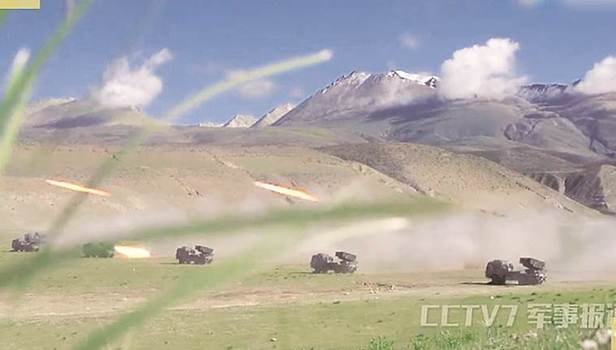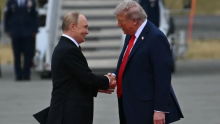Doklam is Ours, Our Army is Still Quiet, but will not Last Long: China
18 Jul 2017 ( IBTN News Bureau )
During the border dispute between India and China, the diplomatic giants have also increased. China has told the Beijing situation to foreign diplomats that its People Liberation Army (PLA) is patiently stationed in Doklam area.
China has told foreign diplomats that its army will not be patient till an unlimited time. China has been claiming on the Doklam area of Bhutan. China calls it Donglong.
India's border in Sikkim is joined with Tibet and Bhutan. China wants to build a high-powered road in Bhutanese territory, which will be able to reach up to 40 tonnes of military vehicles and tanks. From the point of view of India's security, this area is very sensitive. By the capture of China in this area, China's strategic position will be strengthened on the path connecting Northeast India to the rest of India.
Foreign diplomats present in China are concerned about the border dispute and some of them shared their concerns with Indian and Bhutanese diplomats. Last month, Indian soldiers in Doklam area had banned the road construction of the Chinese soldiers. Since then, there is a problem between the two countries. China is demanding to withdraw its troops from India.
China has claimed in front of foreign diplomats that it has concrete evidence that Doklam is its area. China said that Doklam has been working as a pastoral for the animals of Chinese border residents. China also showed the receipt given to Bhutanese grasshopper.
According to sources, the Chinese officials in a meeting in the closed room last week saw foreign diplomats as their parties on the border dispute. The Chinese government has also informed about this stalemate of the some countries involved in G-20 group. One diplomat of the five permanent member countries of the United Nations Security Council told the Indian Express, "Our Beijing-based ally was present in that dialogue. He was indicated that the Chinese would not wait for indefinitely. It is a matter of concern and we have given this information to Indian diplomats in Beijing and Bhutanese diplomats in New Delhi."
According to the diplomat, China has told foreign diplomats that this dispute is between China and Bhutan and India has 'jumped' into it. Diplomat said, "China says that Indian soldiers have entered the border and they have changed the status quo."
Although India has said in its statement to China on June 30 that India is very concerned about the current situation on the border and in this area will change the status quo with road construction which can have serious consequences for India's security.
China says that India will remove its troops without any condition and only then will the dialogue between the two countries be possible. At the same time, India has made it clear that in 2012 with China, it was agreed that there will be no decision after involving all concerned countries in the matter of border dispute between the two countries. The Indian External Affairs Ministry has clearly said that any unilateral decision regarding this trijunction is a breach of that agreement.
According to the Central Government sources, India wants to overcome the current impasse with diplomatic efforts. India's National Security Advisor Ajit Dobhal will be going to China on July 26-27 to attend the NSA meeting of BRICS countries. It is believed that Dobhal will benefit from this opportunity to better mutual understanding with Chinese NSA Yang Jichi.
(Click here for Android APP of IBTN. You can follow us on facebook and Twitter)
Share This News
About sharing
-
 16 Aug 2025
Trump-Putin summit live: Leaders arrive in Alaska for Russia-Ukraine talks
16 Aug 2025
Trump-Putin summit live: Leaders arrive in Alaska for Russia-Ukraine talks
Trump-Putin summit live: Leaders arrive in Alaska for Russia-Ukraine talks...
-
 15 Aug 2025
Trump-Putin summit live: Leaders head to Alaska for Russia-Ukraine talks
15 Aug 2025
Trump-Putin summit live: Leaders head to Alaska for Russia-Ukraine talks
Trump-Putin summit live: Leaders head to Alaska for Russia-Ukraine talks
-
 14 Aug 2025
LIVE: Israel kills at least 100 in a day, 8 more starve to death in Gaza
14 Aug 2025
LIVE: Israel kills at least 100 in a day, 8 more starve to death in Gaza
LIVE: Israel kills at least 100 in a day, 8 more starve to death in Gaza
-
 11 Aug 2025
LIVE: Israeli ‘war crime’ decried after 5 Al Jazeera staff killed in Gaza
11 Aug 2025
LIVE: Israeli ‘war crime’ decried after 5 Al Jazeera staff killed in Gaza
LIVE: Israeli ‘war crime’ decried after 5 Al Jazeera staff killed in Ga...
-
 09 Aug 2025
LIVE: Palestinians refuse to leave Gaza City despite Israeli threats
09 Aug 2025
LIVE: Palestinians refuse to leave Gaza City despite Israeli threats
LIVE: Palestinians refuse to leave Gaza City despite Israeli threats



